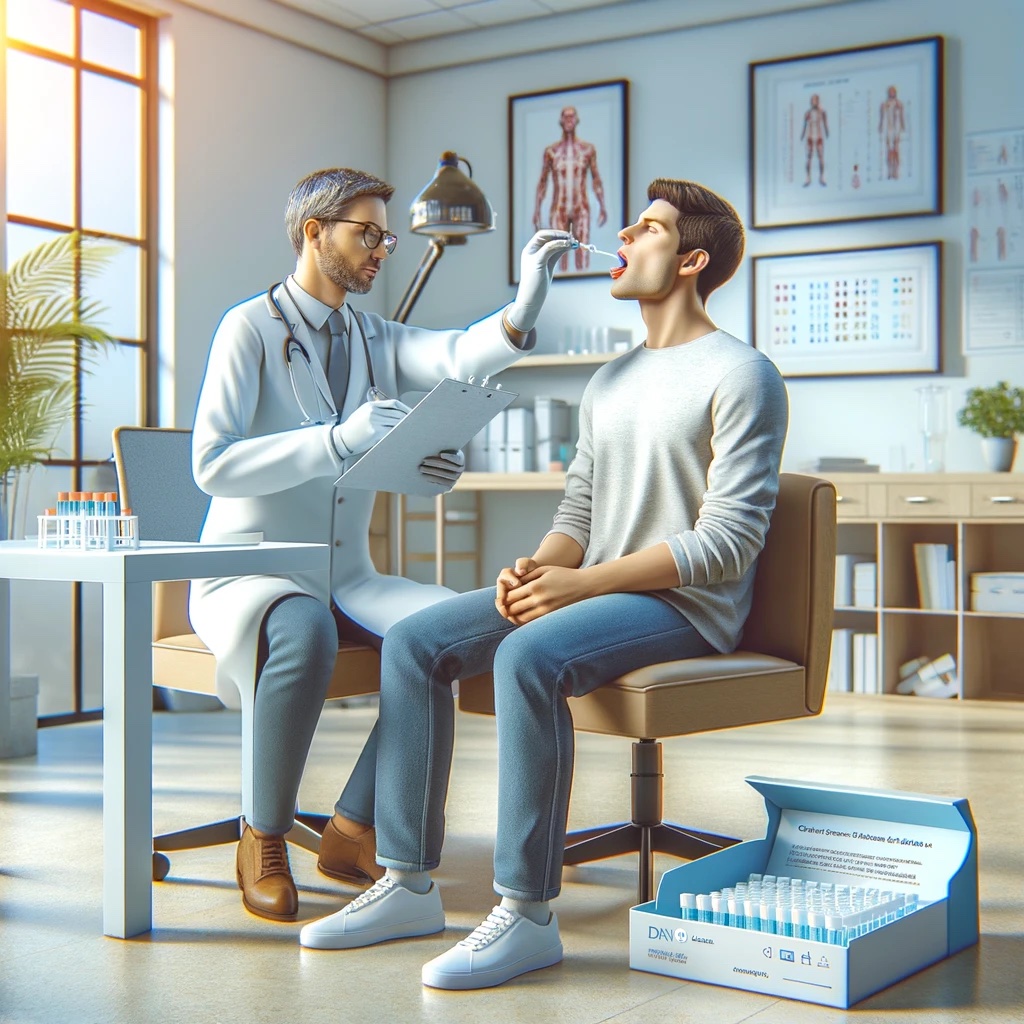Allergy is an immune system reaction to foreign substances (allergens), which in themselves need not be harmful at all, such as pollen grains, animal dander, dust mite droppings, mold spores or food ingredients. Allergens come into contact with the skin and/or mucous membranes (for example, of the eyes) or enter the body through the airways or with food, after which the immune system tries to render these allergens harmless with a sometimes "exaggerated" allergic reaction. The symptoms (runny nose, watery eyes, itching, shortness of breath, diarrhea) are not from the allergen itself, but from the immune system's reaction to the allergen. Hay fever is a well-known example.
Classification according to the mechanism of the allergic reaction
- We distinguish four types of allergic reactions:
- Type I: IgE allergy, of which anaphylaxis is an extreme example.
- Type II: IgG antibody-mediated allergic reaction
- Type III: allergic reaction targeting surface antigens on tissues
- Type IV: cell-mediated allergic reaction
Type I
This type of allergy is called IgE-dependent allergy. It is an allergy that involves IgE antibodies. These IgEs (immunoglobulin E) attach themselves to incoming allergens (such as latex particles). After repeated contact, mast cells (see also: white blood cells) are prompted to pour out their contents and these vasoactive amines (such as histamine, serotonin and prostaglandins) will then cause a number of changes in the body:
- vasodilation (vasodilation of blood vessels in the skin)
- narrowing of the bronchi of the lungs
- decrease in cardiac activity
This may result in:
- nasal complaints: runny nose, sneezing, swollen nasal mucosa
- difficult and sometimes wheezing breathing
- red eyes: conjunctivitis
- Skin changes: becoming redder, giving off heat, itching, rash
- in severe cases blood pressure drop and shock, in extreme cases even cardiac arrest
In type I allergy, a reaction does not occur on initial contact with the allergy-causing agent. After the first exposure, sensitization first follows. The body starts producing IgE antibodies against the substance in question. Only after repeated contact with the allergen does the actual allergic reaction occur.
If the reaction is acute and life-threatening, it is called an allergic anaphylactic reaction (anaphylaxis).
Examples of type I allergy include:
- asthma
- hay fever (pollinosis)
- constitutional eczema
These are all conditions in which hereditary factors may play a role.
Effective remedies for hay fever are antihistamines, which counteract the effect of histamine. In addition, preventive agents that can be used include mast cell granulation inhibitors (such as cromoglicate), and corticosteroids.
Type II
This form of allergy, also called cytotoxic reaction, occurs when antibodies start to target the surface of cells and tissues, to the antigens present there. This starts a series of reactions that eventually causes the breakdown of cells or tissue. A typical example is a blood transfusion between individuals with incompatible blood groups. This leads to agglutination of red blood cells and, in very severe cases, even death.
This reaction also often involves an allergic reaction to a drug. The allergen binds to a body cell and changes the protein composition of the membrane. As a result, the body cell is recognized as foreign and is attacked by the body's own immune system. This involves a direct cytotoxic reaction by IgG or IgM (antibodies). Damage is caused by neutrophilic granulocytes and natural killer cells. Neutrophil granulocytes release proteolytic enzymes that cause an inflammatory response. Naturalkiller cells release granules that cause the cell to lyse (break down).
Type III
This form of allergy occurs when antigen-antibody complexes precipitate and, among other things, attract neutrophils and activate the complement system, causing tissue damage. There are two forms of a type III reaction. In the first form, antigen-antibody complexes are formed in the bloodstream and then precipitate in the tissue. Usually, these complexes precipitate in the joints and kidneys. The other form is the Arthus reaction. In this, the antigen-antibody complexes are formed in the tissue. A well-known example of a type III reaction is systemic lupus erythematosus
Type IV
This allergy results from the activation of T helper/inducer cells (T lymphocytes), which, through the production of various cytokines, eliminate the antigen in question, but also cause tissue damage.
This mediated immune response is mainly directed against foreign cells, such as cells infected by a virus or cells from a transplant. In this form, both the T helper cell (Th cell) and the cytotoxic T cell (Tc cell) play a role. Depending on the pathway, two responses can be distinguished.
T-cell cytotoxia (e.g. in blood transfusion)A binding of CD4+ T helper/inducer cells to the antigen (together with the HLA class II molecule) will lead, via the production of IL-1 and IL-2, to the emergence of CD8+ T-cells that can kill the target cells (recognize them by HLA class I molecules) with an extracellular mechanism. This reaction occurs most frequently in virus-infected cells, such as in hepatitis B. It is not among the allergic reactions, but the second mechanism is:Delayed-type hypersensitivityThis reaction is mediated by lymphocytes and macrophages. When a helper cell binds to an antigen, this lymphocyte will be stimulated to secrete chemokines and cytokines. This is probably done by a distinct population of T helper cells. The chemokines can attract and activate lymphocytes, monocytes and other inflammatory cells. The main inflammatory cell is the activated macrophage, which is held in place by the macrophage migration inhibition factor (MIF). This macrophage can cause tissue damage with mediators and digest phagocytosed material. The target cell is killed, but this is accompanied by tissue damage and an inflammatory response. The most common type IV delayed hypersensitivity reaction is accompanied by eczema: red, irritated, itchy skin. Common is nickel allergy, which can cause rashes on earrings and other jewelry or the buckle of a waistband. Perfume allergy also belongs to type IV allergy.
Treatment BeterKlinic
BeterKliniek is the clinic for Integrative Medicine that bridges regular and non-regular medicine.
An van Veen (physician) and Michael van Gils (therapist) look for the cause of a condition or disease. That is where the treatment starts otherwise, as people often say, it is 'carrying water to the sea'. We call this cause medicine. Sometimes it is also desirable to treat the symptoms (at the same time). We call this symptom medicine.
Chronic disorders often have their cause in epi- genetics. You can schedule a free informative telephone consultation (phone number 040-7117337 until 1 p.m.) at BeterKliniek to discuss your symptoms so that we can provide you with further advice.

